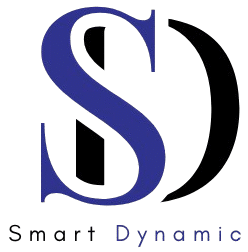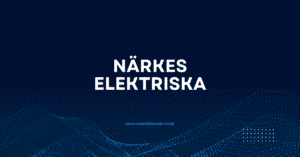In an era defined by digital sprawl, where businesses juggle countless software platforms, data streams, and communication tools, a new operational paradigm is emerging. Enter Sinkom—a powerful conceptual framework designed to eliminate digital friction and create a truly harmonious technological environment. As we move through 2025, the limitations of disconnected systems are becoming glaringly apparent. Sinkom isn’t just another piece of software; it’s a holistic philosophy for building and managing technology that is synchronized, communicative, and modular by design.
This article will provide a comprehensive exploration of Sinkom, breaking down its core principles, tangible benefits, and practical applications. Whether you’re a CTO planning a digital transformation, a project manager battling workflow inefficiencies, or simply a tech enthusiast, understanding Sinkom is crucial for navigating the future of business and innovation.
What is Sinkom? Defining a New Paradigm
Sinkom is a strategic framework that integrates Synchronization, Communication, and Modularity into a unified system architecture. Its primary purpose is to ensure that all components within a digital ecosystem—from data repositories and AI models to human teams and external APIs—work together in perfect, real-time harmony.
The importance of Sinkom in the modern technological landscape cannot be overstated. We have moved beyond the era of isolated tools. Today, success hinges on an organization’s ability to create a cohesive digital nervous system. Sinkom provides the blueprint for this system, enabling a level of automation in workflow and data integration that was previously cumbersome or impossible to achieve. It represents the next logical step in our pursuit of truly intelligent and responsive business environments.
The Core Concept of Sinkom: More Than the Sum of Its Parts
The philosophy behind Sinkom is elegantly simple yet profound: systems should not merely coexist; they should collaborate. The name itself is a portmanteau of “Synchronization” and “Communication,” with “Modularity” as the foundational enabler. Let’s unpack this idea.
Imagine a symphony orchestra. In a traditional system, each musician might play their part perfectly but out of sync with the others, resulting in cacophony. Sinkom acts as both the conductor (synchronization) and the shared musical language (communication), while allowing each musician to be a specialist in their instrument (modularity). The result is a beautiful, coordinated performance.
In practical terms, Sinkom bridges disparate systems and digital ecosystems. It allows your CRM to talk to your ERP, which in turn informs your AI analytics dashboard, all while automatically updating project management tools and notifying relevant teams—without manual intervention. This concept of connected systems is central to modern digital transformation, a trend extensively documented by leading institutions. For instance, a report from MIT Technology Review often highlights how integrated systems are becoming a key competitive advantage, stating that businesses leveraging interconnected platforms see significantly higher agility and innovation output. (You can read more about the importance of digital integration in their insights on digital transformation).
The Three Pillars of Sinkom
The Sinkom framework stands on three interdependent pillars. Understanding these is key to grasping its full potential.
Synchronization: The Rhythm of Operations
Synchronization in Sinkom is about ensuring harmony in data and processes. It means that a change in one part of the system is instantly and accurately reflected across all other connected parts. This goes beyond simple data syncing; it’s about state synchronization, where the status, context, and relationships of data are consistently maintained. This eliminates version conflicts, redundant data entry, and the dreaded “data silo” effect.
Communication: The Flow of Information
If synchronization is the rhythm, communication is the language. This pillar focuses on facilitating clear, efficient, and intelligent interactions between modules. Sinkom promotes standardized APIs and communication protocols that allow different systems, even from different vendors or built on different technologies, to understand each other perfectly. This enables seamless AI-driven collaboration and ensures that information flows as freely as water throughout the organization.
Modularity: The Foundation of Adaptability
Modularity is what makes Sinkom scalable and flexible. Instead of building monolithic, rigid software architectures, Sinkom advocates for a system composed of discrete, self-contained modules. Each module has a specific function and communicates with others through well-defined channels. This allows businesses to plug in, swap out, or upgrade individual components without disrupting the entire system. It future-proofs your technology stack and is a cornerstone of business process innovation.
Key Features and Components of Sinkom
A Sinkom-based system is characterized by several distinct features:
-
Universal Interoperability: At its heart, Sinkom is an interoperability model that breaks down barriers between legacy systems and modern cloud-native applications.
-
Intelligent Automation: By creating a fully connected environment, Sinkom enables complex, end-to-end automation of business processes, from lead generation to customer support and reporting.
-
Cloud-Native Adaptability: Sinkom thrives in cloud and hybrid environments, leveraging their inherent scalability and connectivity.
-
AI and Machine Learning Integration: AI acts as the brain of a Sinkom system, analyzing the synchronized data flowing through the communication channels to predict outcomes, optimize workflows, and provide actionable insights.
-
Resilience and Redundancy: The modular nature means a failure in one component doesn’t necessarily bring down the entire network, enhancing overall system stability.
The Tangible Benefits of Implementing Sinkom
Adopting a Sinkom framework yields significant, measurable advantages:
-
Streamlined Operations: Manual handoffs and repetitive data entry are eliminated. A sales order can automatically trigger inventory checks, schedule production, and update financial forecasts.
-
Drastically Reduced Cost and Complexity: While initial implementation requires investment, the long-term TCO (Total Cost of Ownership) plummets. System management becomes more straightforward, and integration projects are faster and cheaper thanks to the modular approach.
-
Accelerated Innovation and Productivity: When teams are freed from administrative tasks and have access to real-time, synchronized data, they can focus on higher-value work. This creates a culture of productivity and continuous improvement.
-
Real-World Example: Consider a global e-commerce company. Before Sinkom, their customer service, warehouse, and website teams used different systems. A return request could take days to process across these silos. After implementing a Sinkom-inspired data integration framework, a return initiation instantly updates inventory, triggers a pickup, notifies the customer via their preferred channel, and processes the refund—all within hours, dramatically improving customer satisfaction.
How Sinkom Works: A Step-by-Step Framework
The Sinkom process can be broken down into a continuous cycle:
-
Modularization: The first step is to deconstruct existing systems or design new ones as a set of independent modules (e.g., User Authentication, Payment Processing, Data Analytics).
-
Protocol Establishment: A standardized communication protocol (like a universal language) is defined for all modules to use. This often involves RESTful APIs, event-driven architectures, or messaging queues.
-
Synchronization Trigger: An event occurs in one module (e.g., a new user signs up in the Authentication module).
-
Intelligent Communication: The Authentication module instantly communicates this event, along with all relevant data, to every other module that needs to know, based on pre-defined rules.
-
Coordinated Action: The Payment module prepares a new customer account, the Analytics module logs the signup source, and the CRM module creates a new lead—all simultaneously.
-
Feedback Loop: The outcomes of these actions are fed back through the system, allowing AI components to learn and optimize the process for next time.
This framework functions seamlessly across AI clusters, IoT networks, and complex enterprise systems, creating a dynamic and self-optimizing digital organism.
Sinkom vs. Traditional Systems: A Clear Evolution
The difference between Sinkom and traditional, monolithic systems is night and day.
| Feature | Traditional Systems | Sinkom Framework |
|---|---|---|
| Architecture | Monolithic, rigid | Modular, flexible |
| Integration | Complex, point-to-point, brittle | Simple, universal, resilient |
| Scalability | Difficult and expensive | Granular and cost-effective |
| Innovation Speed | Slow (requires full-system updates) | Fast (individual modules can be updated) |
| Data Flow | Siloed, manual syncs | Real-time, automated synchronization |
| Cost of Change | High | Low |
Sinkom is the definitive next evolution, moving us from the rigid, mechanical systems of the past to the organic, interconnected networks of the future.
Real-World Applications of Sinkom
The Sinkom philosophy is already being applied across industries:
-
AI Startups: Enabling rapid prototyping by connecting best-in-class AI models for vision, language, and data processing into a single, powerful application.
-
Enterprise Workflow Optimization: Synchronizing HR, finance, and operations platforms to automate everything from employee onboarding to quarterly reporting.
-
Software Development: Powering microservices architectures, where dozens of small, independent services work together to deliver a large application like Netflix or Uber.
-
Educational Systems: Creating personalized learning paths by synchronizing student performance data with digital content libraries and communication tools.
Common Challenges and Limitations
Adopting Sinkom is not without its hurdles:
-
Legacy System Integration: Integrating old, closed systems can be a significant technical challenge, often requiring custom middleware.
-
Initial Investment and Expertise: Designing a modular architecture requires upfront planning and access to skilled architects and developers.
-
Cultural and Training Resistance: Shifting from familiar, standalone tools to a deeply integrated system requires change management and comprehensive training for teams.
-
Security and Governance: With data flowing freely, ensuring robust security protocols and data governance across all modules is critical and complex.
Expert Insights and Research
Industry thought leaders are rallying around the principles that Sinkom embodies. A Harvard Business Review article on the future of work often stresses that “the companies that will lead in the next decade are those that can harness the collective power of their people, data, and tools through seamless integration.” They argue that operational synergy is the new moat.
Similarly, experts from Forbes Technology Council frequently point out that modular communication and interoperability are no longer “nice-to-haves” but are essential for survival in a fast-paced digital economy. The consensus is clear: the future belongs to connected, adaptable systems.
Future Scope: What’s Next for Sinkom?
The trajectory of Sinkom is incredibly exciting. As underlying technologies advance, so too will its capabilities:
-
AI and Predictive Sinkom: Future systems will not just react in real-time but will anticipate needs, proactively reconfiguring modules to optimize for upcoming tasks.
-
Blockchain for Trust and Verification: Integrating blockchain modules could provide an immutable, synchronized ledger for transactions, enhancing trust and auditability in a Sinkom network.
-
The Rise of the Autonomous Enterprise: By 2030, we can expect to see organizations where Sinkom frameworks, powered by advanced AI, manage vast portions of operations autonomously, from supply chain logistics to customer engagement.
Companies that begin adapting to this concept now, by prioritizing interoperability and modularity in their tech investments, will build a significant and lasting competitive advantage.
Conclusion
Sinkom represents a fundamental shift in our relationship with technology. It moves us beyond seeing tools as discrete utilities and toward envisioning them as parts of a cohesive, intelligent whole. By championing synchronization, fluent communication, and flexible modularity, this framework addresses the core inefficiencies plaguing modern organizations.
The potential impact is monumental—unleashing new levels of productivity, enabling breathtaking innovation, and creating business environments that are as agile and dynamic as the markets they serve. The journey toward a fully realized Sinkom ecosystem may be complex, but the destination—a world where technology works in perfect harmony to amplify human potential—is unquestionably worth the effort.
Sinkom is not just a framework — it’s the next step in human-technology collaboration.







